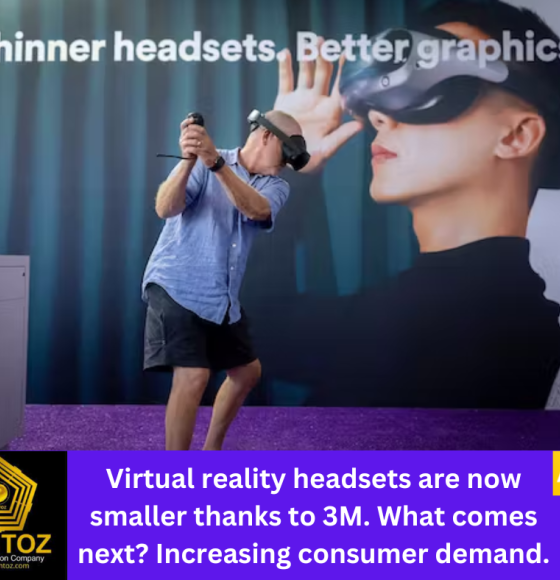One day, David Ylitalo envisions reading this newspaper, scanning for a story, and having the words brought directly in front of his eyes. However, there is only a virtual reality program that simulates paper, not actual paper.
We’re on the verge of this becoming the next computer-based visual information consumption method, according to Ylitalo. “What’s going to make it the next big thing is content that supports all these different uses,”
Vice President of Research and Development for 3M’s Display Materials Division, which has assisted manufacturers of VR headsets for ten years, is Ylitalo.
By reducing headset size and enhancing display quality, 3M’s “pancake optics” contribute to VR’s effort to increase public interest in the technology.
The industrial behemoth is integrating its materials and technology into a number of next-big-things, including electric vehicles, industrial automation, climate technology, and virtual and augmented reality, as Minnesota-based 3M gets ready to spin off its health care business and reposition the remaining company for growth.
Traditional consumer electronics like phones, TVs, and computers, a key business area for 3M that generally generates more than $3 billion in yearly sales, have seen a slowdown in sales. Due to weak consumer demand, particularly in China, the first half of the year’s revenue for electronics is down 23%.
However, it has recently seen challenges due to resource shifts to artificial intelligence and tech industry layoffs.
“It goes through its own hype cycles, like a lot of industries do,” said Nick Roseth, president of the VR/AR Association trade group’s Minneapolis chapter. The two greatest problems are that there aren’t enough devices available and that content is still prohibitively pricey.
The introduction of Apple’s Vision Pro this summer was heralded as a turning point, but Roseth predicted that for $3,500, developers would primarily use it to keep pushing the limits of the technology.
Before there is significant improvement in customer affordability and accessibility, he anticipates another 18 to 24 months.
90% of people don’t know about this technology, I have to remind myself, Roseth stated. It burns slowly.
Susan Kent, director of the 3M R&D lab, stated earlier this year, “They merely asked us if we could make their headsets smaller.” We quickly recognized that we could improve the image quality and make it appear less cartoonish.
Additionally, 3M has created optical films for heads-up displays, which project digital information onto a vehicle’s windshield.
With reference to apps like Pokemon Go, Ikea Place, and fashion try-ons, Roseth asserted that “we are already utilizing augmented reality on our phones.” That combines knowledge with the real world.
At the 3M Open in Blaine last month, headsets, heads-up displays, and more were on show. As the sponsor of the golf tournament, 3M’s fan experience tent highlighted how its technology is fusing the physical and digital realms—offering a practical look at everything “phygital.”
Particularly well-liked were the golf games, which featured an augmented reality putting tool.
“From here, it’s about doing this on a large scale,” Ylitalo said. “At a volume and cost that allows our customers to put these on not millions of faces but hundreds of millions or billions.”

















